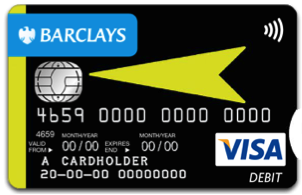
Paul Smyth is Head of IT Accessibility at Barclays and has been a leading advocate of greater focus on the needs of customers with disabilities for many years.
In a recent AbilityNet webinar he described the journey they’re taking in putting accessibility at the heart of their business strategy, including three key things he would recommend to others embarking on the same process.
Making the business case
So, firstly, why has Barclays decided to commit to digital accessibility?
There are three reasons, with the primary reason being that it makes good business sense. As Ashok Vaswani, CEO of Personal & Corporate Banking, says:
“This isn’t CSR… it’s fundamental to our business model”.

With disabled people, older people and their households estimated to have disposable income of more than £500bn in the UK alone, there is clear commercial value in focusing on the needs of these customers. There is a competitive advantage in being ahead of the pack in meeting their needs as well as broader benefits from making services easier for all customers.
Secondly, it also aligns with Barclays’ own values and a moral and social imperative to respond to people’s needs and help them achieve their ambitions in the right way.
And finally, there is a legal obligation to meet relevant requirements and, by doing so, it reduces the risk of expensive litigation.
Three key lessons about winning the business case
1. Senior executive buy-in is essential if you are to achieve your goals – but having a CEO of a major corporate make this sort of commitment doesn’t happen overnight. After a lot of internal advocacy, Paul points to an event called 'Living In Our Customers World’ as a key breakthrough moment.
“With the invitation issued from the very top, this was attended by our senior business leaders who were joined by a cross section of disabled people. As well as hearing about their experiences, we used a variety of disability simulation kit to bring the issues to life and deepen empathy – winning hearts and minds in the process.
“There is no doubt this was the most significant milestone in our journey and was much more effective than trying to win the usual stuffy logical/rational business case argument. People left the room with a very personal insight into the challenges that our customers face, and were much more motivated to use their influence and resources to deliver strategic and operational change.”
2. Secondly, it’s a team effort.
To achieve success, you have to have a cross-departmental approach to tackling the whole accessibility agenda. Addressing the technological barriers faced by disabled and older customers is not solely an IT issue to fix, but rather requires a co-ordinated effort including HR, Marketing, Sourcing, Change teams and the wider business.
3. And, finally, be clear on your commitment and the resources you need to achieve it.
Making a public statement of intent with regards to Barclays’ ambition to become the most accessible ‘Go-To’ bank demonstrated that the organisation is serious and committed. We’ve started on this journey, but we will need to continuously seek feedback from and consult with disabled people in order to understand their needs and to keep us on track. Partnering with disability charities, external experts and our internal colleagues is playing a major role in improving our accessible services and support.
 Real business benefits
Real business benefits
Barclays has already seen several tangible business benefits from adopting this strategy, including the introduction of award-winning talking cash machines, hi-visibility debit cards and advances in using voice biometrics for telephone banking security. The latter is an alternative to traditional password and PIN-based systems which are a barrier for many disabled and older customers, but also has the potential to increase ease of access to services for every customer.
This final example is typical of what Paul sees as the next stage of the journey:
“Rather than thinking about what extra accessibility projects we can deliver to improve banking for disabled and older customers, we need to embed an accessibility mindset into the entire organisation and into everything we change and build. If we can achieve this, then it will lead to greater innovation and greater customer-centered service.”
View a recording of the AbilityNet webinar featuring Paul from October 2014
